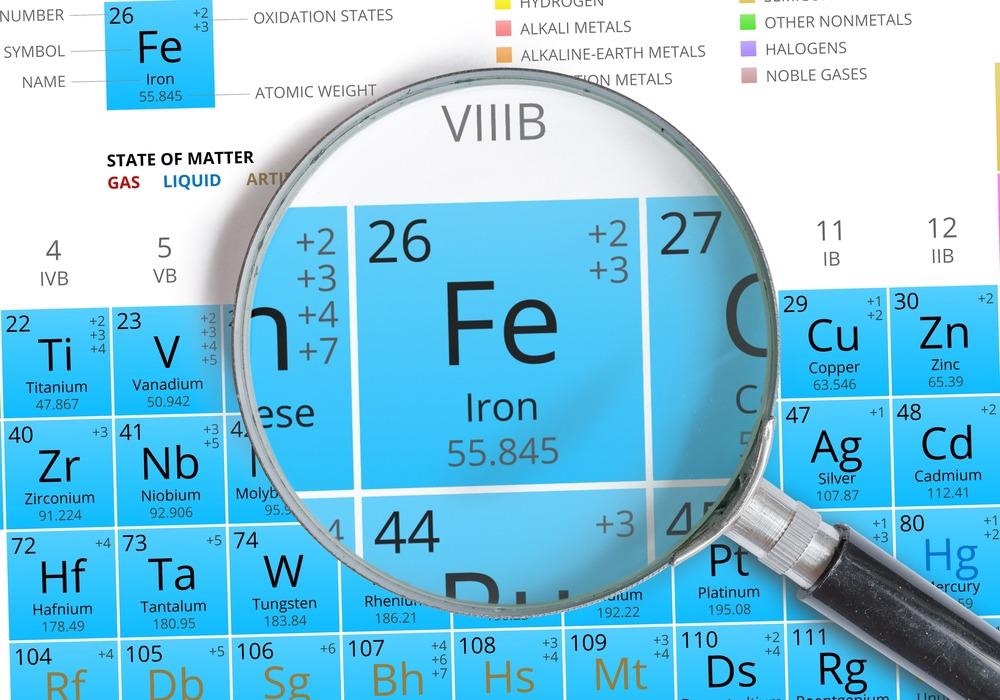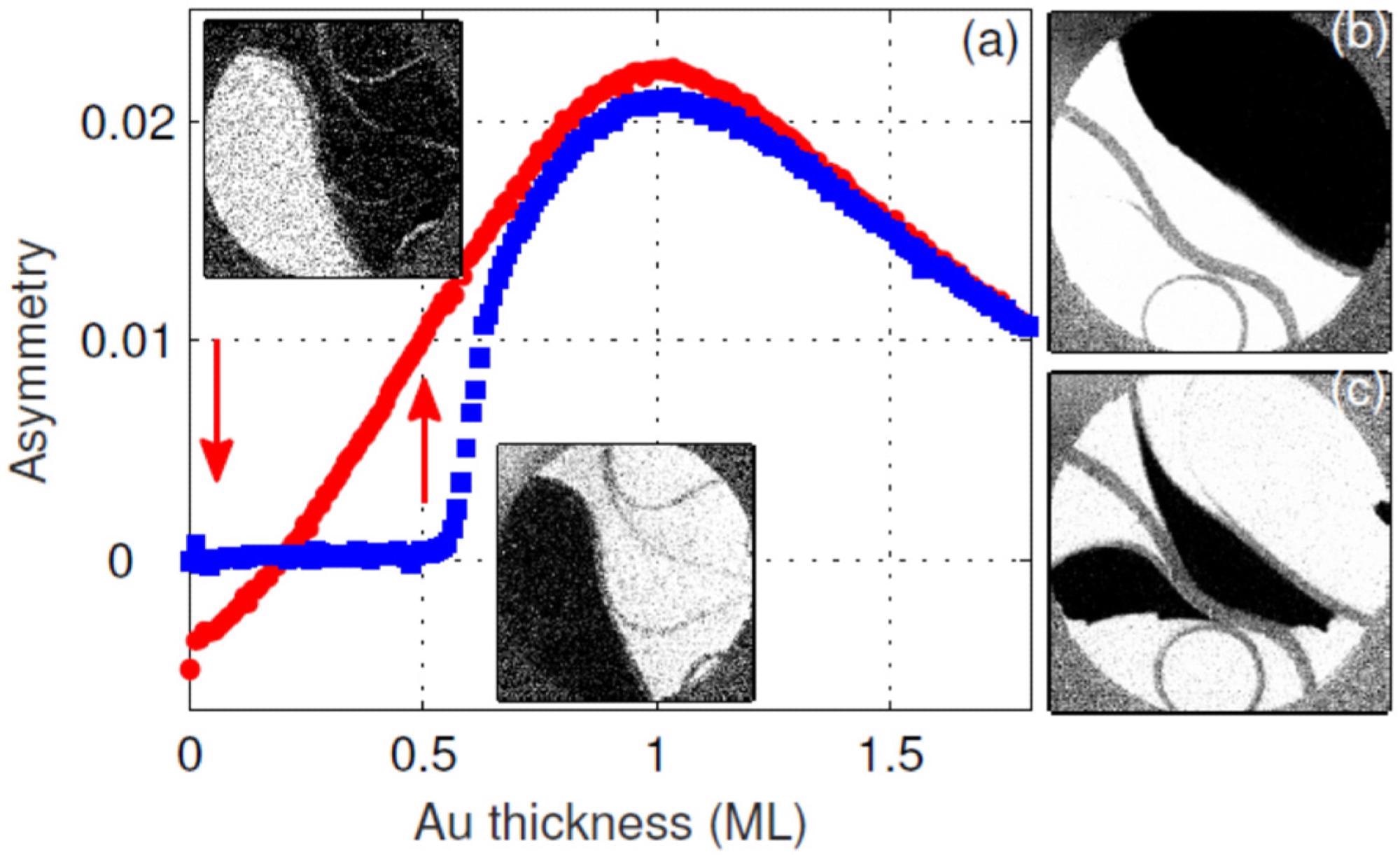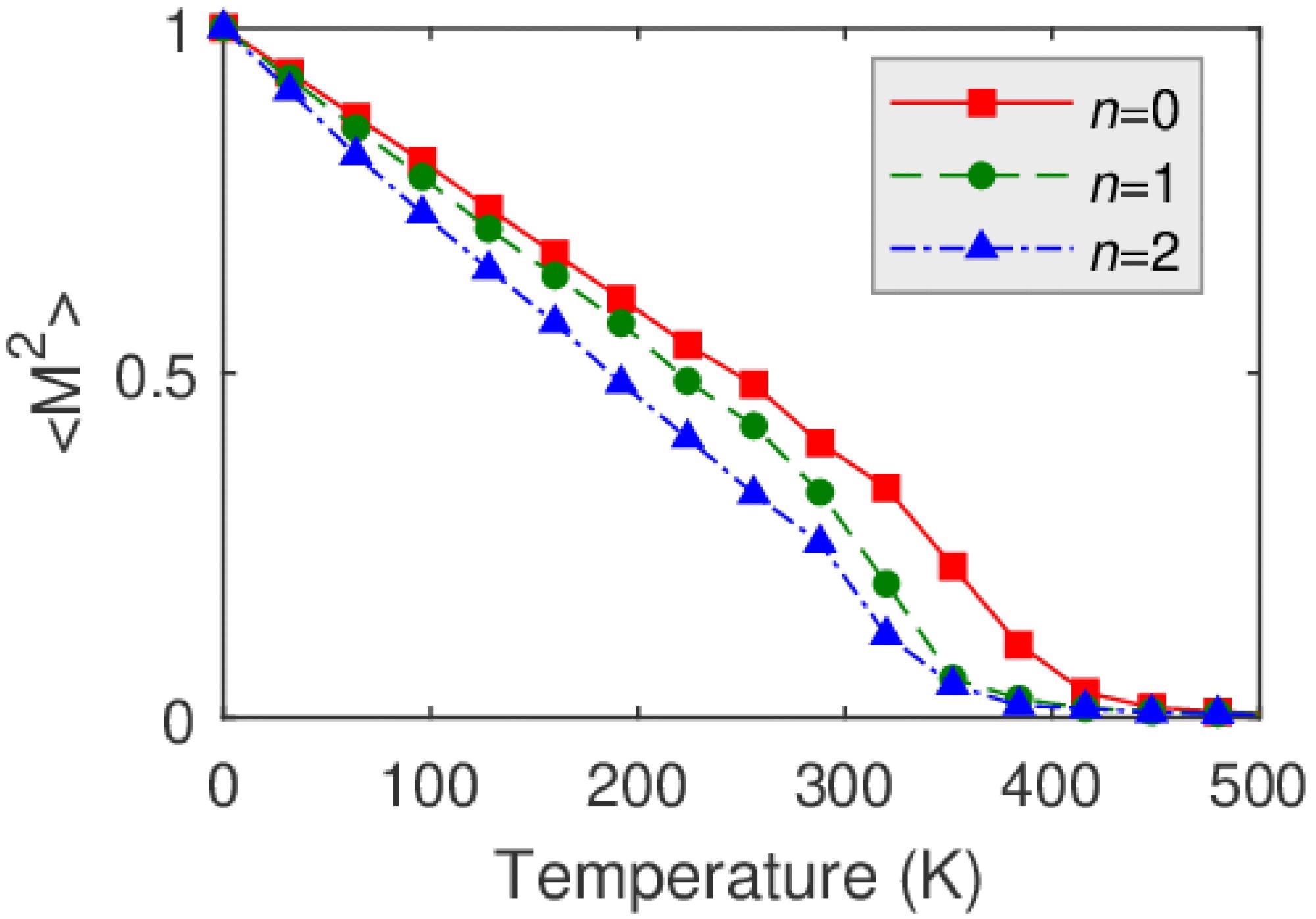.jpg) By Susha Cheriyedath, M.Sc.Reviewed by Skyla BailyFeb 1 2022
By Susha Cheriyedath, M.Sc.Reviewed by Skyla BailyFeb 1 2022In an article recently published in the open-access journal Materials, researchers investigated the magnetic and crystallographic properties of an Fe monolayer (ML) deposited on a 2 ML Au/W(110) substrate by using relativistic screened Korringa–Kohn–Rostoker calculations, density functional theory (DFT), and spin-polarized low-energy electron microscopy (SPLEEM).

Study: Tuning Ferromagnetism in a Single Layer of Fe above Room Temperature. Image Credit: vchal/Shutterstock.com
The researchers also demonstrated the potential of capping an Fe ML with Au towards the tuning of its Curie temperature (TC) and the magnitude of magnetization.
Background
Curie temperature and magnetization magnitude are two of the most essential parameters of technologically relevant ferromagnetic ultrathin films. They are known to be influenced by the crystallographic features of layers. Furthermore, as the film thickness reduces to a single atom limit, its magnetic characteristics change radically.

LEED patterns of bare W(110) (a), 2 ML Au/W(110) (b), 1 ML Fe/2 ML Au/W(110) (c), 2 ML Au/1 ML Fe/2 ML Au/W(110) (d). The arrow in (b) indicates tungsten diffraction spot. Electron energy 38 eV. Image Credit: Zdyb, R et al., Materials
Thermal fluctuations can be mitigated in the presence of a large enough anisotropy, resulting in the emergence of long-range order of magnetic moments. Practically, ferromagnetic films are grown on substrates that act as sources of anisotropy, but the TC is much reduced because of the finite-size effects and is generally far below room temperature (RT).
A monolayer of Fe epitaxially formed on substrates with varying symmetry, such as W(110) and Au(001), has been frequently used in the research of ferromagnetism of single layers. It has also been demonstrated that covering the Fe ML with other metals alters the TC and magnetic moments. There are only a few rare occurrences of ferromagnetic films with Curie temperatures surpassing RT in single layers without coating; for example, Fe ML on Au(001) and on double-layer Au on W(110).
About the Study
In the present study, researchers investigated the basic magnetic characteristics of a single layer of Fe with hexagonally organized atoms. This study illustrated the growth, crystallographic, and magnetic structure of Fe ML as well as that of Au-capped Fe ML using low-energy electron diffraction patterns, SPLEEM, and DFT calculations. The structural effects on the magnetic characteristics were also discussed.
The adsorption of Au on top of a single layer of Fe atoms is used to tune the TC and magnitude of magnetization. An increase in TC with Au coverage up to 2 ML is demonstrated in an experimental setting. Simultaneously, the magnitude of magnetism is increased until the coverage of Au reaches 1 ML, after which it starts dropping.
The Vienna ab initio simulation package was used to optimize the atomic structure of various Aun/Fe1/Au2/W (n = 0,1,2; the number of atomic layers) interface models using the Perdew–Burke–Ernzerhof parametrization of the generalized gradient approximation.

(a) Asymmetry vs Au capping layer coverage. The SPLEEM images in the inset were taken at Au coverages shown by the arrows. In (b,c) SPLEEM images taken before ferromagnetic-paramagnetic and after paramagnetic-ferromagnetic phase transitions, respectively. The gray features, e.g., circle, denote step bunches that are paramagnetic. Electron energy 3.5 eV, field of view 12 µm. Image Credit: Zdyb, R et al., Materials
Observations
The study used several DFT-based structural models to demonstrate the ferromagnetic states with elevated magnetic moment values of Fe atoms relative to their bulk counterpart and a further increment was observed in magnetic moments after covering with Au. The Curie temperatures computed theoretically were close to those obtained experimentally. Furthermore, the calculations revealed some frustrated isotropic Fe–Fe exchange interactions.
It was also observed that at RT, the single layer of iron atoms showed hexagonal symmetry and exhibited ferromagnetic order. It was shown that the continued development of Au at RT on top of the Fe ML follows the same crystallographic orientation, preserving the same two-domain morphology and nearly the same lattice constant of 3.92 ± 0.08 and 3.93 ± 0.08 for 1 ML and 2 ML Au on top of Fe, respectively.
The dependence of the exchange asymmetry parameter (Aex) on the amount of Au atoms resting on the Fe ML was suggested based on a roughly linear increase in Aex with Au coverage of up to about 1 ML and subsequently began to decline with further increase in Au coverage. At the same time, the TC of the Fe ML came out to be approximately 327 ± 3 K when Au is not adsorbed on the top of Fe, 335 ± 3 K with 1 ML Au, and 346 ± 3 K with 2 ML Au. Additionally, the theoretical results provided detailed information on the sensitivity of magnetic characteristics.

Magnetization curves ⟨M2⟩(T) for structural model D of Aun/Fe1/Au in case of n = 0; 1; 2. Image Credit: Zdyb, R et al., Materials
Conclusions
In conclusion, this study examined the effects of Au adsorption on the TC and the magnitude of magnetization of 1 ML Fe grown on 2 ML Au/W(110). The TC of a single layer of iron exceeded RT (327 K), and it could be enhanced further by coating it with Au atoms. Moreover, capping with the Au layer boosted the magnetic moments of the Fe atoms at first, but after 1 ML Au, the magnetization began to decline.
The multilayer structural models elucidated corresponding ferromagnetic states, frustrated isotropic exchange contacts, and the nearest-neighbor–Dzyaloshinsky–Moriya interactions. The computed magnetic moments ranged from 3.08 to 3.43 µB, showing that the Fe atoms have a high spin state.
Disclaimer: The views expressed here are those of the author expressed in their private capacity and do not necessarily represent the views of AZoM.com Limited T/A AZoNetwork the owner and operator of this website. This disclaimer forms part of the Terms and conditions of use of this website.
Sources:
Zdyb, R., Palotas, K., Simon, E. et al. Tuning Ferromagnetism in a Single Layer of Fe above Room Température. Materials 15(3), 1019 (2022).
https://www.mdpi.com/1996-1944/15/3/1019